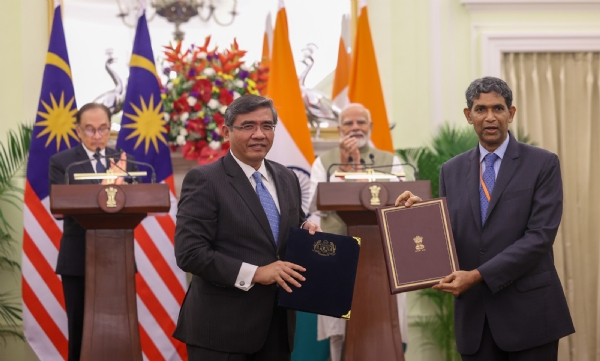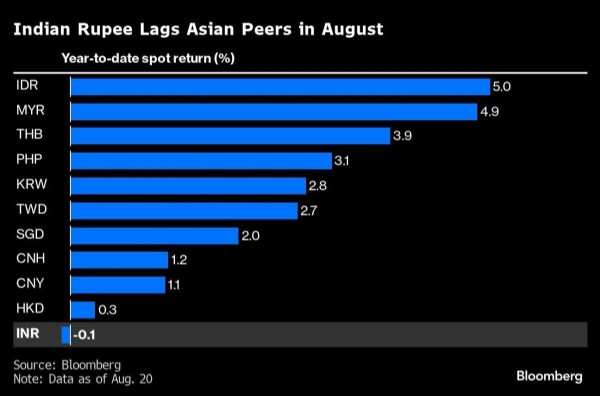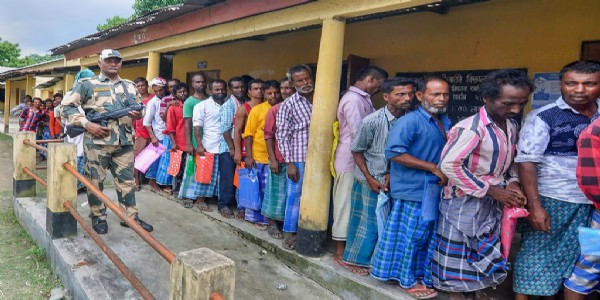#SecurityScan 93: Ambani vs. Tata, Growing Area of Conflict Between China and Philippines, Battle for Market Share & more
India faces the dilemma of balancing economic interests with national security concerns. China has employed various tactics to influence India"s stance.
Total Views | 852
This article is a summary of important events that have taken place in last one week affecting, India's national security.
#COUNTERING CHINESE MULTI DOMAIN , GREY ZONE, HIGH BREED WARFARE
ECONOMIC/TRADE WARFARE-India-China Relations: Ban Chinses Imports
China's Strategic Intentions

Despite China's apparent desire for normalized economic relations, its underlying strategic goals remain unchanged. Beijing is keen on maintaining access to India's market while simultaneously exerting pressure on the border. The recent protests against economic assistance to Arunachal Pradesh and other border regions underscore China's expansionist ambitions.
The Border Standoff
The ongoing border dispute, marked by the deployment of significant troops and infrastructure development along the Line of Actual Control (LAC), continues to be a major source of tension. China's military buildup and territorial claims pose a serious challenge to India's sovereignty.
India's Stance and Challenges
India has adopted a firm stance against China's aggressive actions, including building defenses along the border and reducing economic dependence. However, the country faces the dilemma of balancing economic interests with national security concerns.
China's Pressure Tactics
China has employed various tactics to influence India's stance. These include diplomatic pressure, economic coercion, and attempts to sow discord within India. Beijing has also leveraged international platforms to advance its narrative and undermine India's image.
The Road Ahead
The prospects for improved India-China relations in the near future appear bleak. Given China's persistent aggressive behavior, India must adopt a realistic approach, prioritizing national security and sovereignty. While maintaining economic engagement, India should also diversify its trade partnerships to reduce dependence on China.
Ambani vs. Tata: A Battle for Fast Fashion Dominance& The Chinese Hand
The Stakes Are High
In the cutthroat world of Indian retail, a fierce battle is brewing between two of the country's most powerful conglomerates: the Tata Group and Reliance Industries. The stakes are high, as the dominance of the fast-fashion market in India could significantly impact the future of these giants.
Ambani's Strategic Move
Mukesh Ambani, the chairman of Reliance Industries, is reportedly seeking the assistance of Chinese fast-fashion giant Shein to bolster his position in the Indian market. Recognizing the threat posed by Tata's Trent Ltd and its in-house brand Zudio, Ambani is looking to leverage Shein's expertise and supply chain capabilities to gain a competitive edge.
Tata's Strong Foothold
The Tata Group's retail arm, Trent Ltd, has experienced phenomenal growth in recent years. Sales have tripled and net profit has surged 12 times compared to pre-pandemic levels. Zudio, the group's fast-fashion brand, has resonated with a young demographic, offering trendy clothing at affordable prices.
The Battle for Market Share
The battle between Ambani and Tata is essentially a contest for market share. Both conglomerates are vying to capture the hearts and wallets of India's growing consumer base. The outcome will depend on several factors, including:
Product Quality and Variety: Both Reliance and Tata will need to continuously innovate and offer products that meet the evolving tastes and preferences of Indian consumers.
Pricing Strategy: Competitive pricing will be crucial in attracting customers. However, it is essential to maintain profitability.
Supply Chain Efficiency: A robust and efficient supply chain can help ensure timely delivery of products and reduce costs.
Brand Image and Marketing: Building a strong brand image and effective marketing campaigns will be essential to differentiate products and attract customers.
China's Gains

Shein's involvement in the Ambani-Tata battle could provide significant benefits to China. By partnering with Reliance, Shein can gain deeper access to the Indian market, one of the world's largest and fastest-growing consumer markets. This could lead to increased sales, brand recognition, and market share for Shein.
China's Divide and Conquer: A Threat to India's Economic Sovereignty
India's persistent trade deficit with China, despite concerted efforts to reduce it, is a pressing concern. The imbalance, with China's exports to India exceeding imports by a factor of five, underscores the need for a strategic approach to counter China's economic influence.
China's Divide and Conquer Strategy
China has employed a sophisticated strategy of "divide and conquer" to gain a foothold in the Indian market. This involves:
Leveraging Economic Relationships: China often offers favorable trade terms or investments to Indian companies, creating a sense of dependency.
Exploiting Internal Divisions: By fostering relationships with specific Indian corporate groups or political factions, China can sow discord and weaken India's negotiating power.
Pressure on the Government: China may use its economic leverage to exert pressure on the Indian government, influencing policy decisions in its favor.
Countering China's Divide and Conquer Tactics
To protect itself from China's economic influence, India must adopt a multi-faceted approach:
Diversification of Trade Partners: India should actively seek to diversify its trade relationships, reducing its dependence on China. This can involve exploring new markets and promoting exports to countries such as the United States, the European Union, and Southeast Asia.
Promotion of Domestic Manufacturing: India should focus on promoting domestic manufacturing and reducing its reliance on imports. This can be achieved through policies that support local industries, such as tax incentives, subsidies, and infrastructure development.
Strengthening Intellectual Property Rights: Protecting intellectual property rights is crucial to preventing Chinese companies from unfairly benefiting from Indian innovation. India should implement robust measures to safeguard its intellectual property and encourage domestic research and development.
Strategic Alliances: India should forge strategic alliances with other countries to counter China's economic influence. This can involve collaborating with like-minded nations to negotiate better trade deals and address shared concerns.
Building Domestic Capabilities: Investing in education and training to develop a skilled workforce is essential for India to become more competitive and reduce its reliance on foreign technology. By building domestic capabilities, India can reduce its vulnerability to external pressures.
By adopting these strategies, India can mitigate the risks posed by China's divide and conquer tactics and protect its economic sovereignty.
The Critical Importance of Subsea Fiber-Optic Cables
Subsea fiber-optic cables, which carry over 95 percent of international data, are a vital component of global information and telecommunications technology (ICT) infrastructure. As AI technologies advance and the demand for data center computing and storage resources surges, the need for expanded subsea capacity becomes increasingly critical.
The Geopolitical Risks and Emerging Threats
Undersea cables are indispensable for global communications, making them a prime target in the escalating great power competition. Russia and China, in particular, pose significant threats to the security of these critical systems. Without coordinated international efforts to safeguard these cables, the risks of disruption, espionage, and economic instability will continue to escalate.
Ensuring the Security and Resilience of Subsea Infrastructure
China's dominance in the subsea cable industry threatens the economic and digital sovereignty of numerous countries. To counter these risks, the United States must take proactive measures to protect subsea cable networks. This involves not only defending against physical threats but also ensuring the integrity and reliability of the data transmitted through these cables.
By leveraging the capabilities of Development Finance Institutions (DFIs) and facilitating international cooperation, the United States and its allies can mitigate the risks posed by adversaries and secure the digital backbone of the global economy.
South China Sea: A Growing Area of Conflict Between China and Philippines

The South China Sea has long been a source of tension between China and the Philippines. Recent years have witnessed a significant escalation in these tensions, as the Philippines has adopted a more assertive stance in response to China's growing military presence and aggressive maneuvers in the disputed waters.
A Year of Escalating Confrontations
Over the past year, the relationship between China and the Philippines has been marked by frequent skirmishes between their naval forces in the South China Sea. Despite a provisional agreement to avoid miscalculations, recent incidents, including a collision between vessels near the Spratly Islands, indicate that tensions remain high.
China's Military Buildup and Philippine Resistance
China's Coast Guard has intensified its military presence around the disputed Second Thomas Shoal, engaging in threatening maneuvers to deter Philippine ships from the region. In response, the Philippines has adapted its strategy, deploying aircraft to resupply its garrison on the Second Thomas Shoal.
A War of Words
Beyond physical confrontations, China and the Philippines are engaged in a war of words over the disputed territories. The naming conventions used by both countries reflect their broader efforts to solidify their claims and influence international opinion.
The Limitations of Bilateral Consultations
The recent meeting of the China-Philippines Bilateral Consultation Mechanism (BCM) aimed to ease tensions, but differing post-meeting statements suggest that fundamental disagreements remain unresolved. The BCM, established seven years ago, has shown limited effectiveness in resolving the dispute.
The Path Forward: A New Strategic Approach
The escalating tensions between China and the Philippines necessitate a reassessment of their current strategies. China's reliance on military deterrence and bilateral consultations has not been sufficient to reduce hostilities. The Philippines' strengthened partnership with the United States further complicates the situation. For Beijing, a more nuanced diplomatic approach may be necessary to prevent further escalation.
Enhancing U.S.-Japan Defense Industrial Cooperation
Japan has historically maintained strict restrictions on defense spending and arms exports. These limitations, alongside its "exclusive self-defense" (senshu bouei) policies, have hindered the development of a competitive and robust defense industrial base. However, Japan's 2022 National Defense Strategy emphasized the need to strengthen this sector, prompting the government to gradually relax restrictions on defense equipment exports to create more opportunities for international cooperation.
Focus on Uncrewed Aerial Systems (UAS)
A key area of interest for Japan is the development of uncrewed aerial systems (UAS). The Ministry of Defense has announced plans to invest JPY 1 trillion (approximately USD 7.1 billion) over the next five years in UAS development. This aligns with similar initiatives by the U.S. Department of Defense, such as the Replicator initiative and the Air Force’s Collaborative Combat Aircraft program. Beyond military platforms, Japan’s advanced electronics industry, particularly in subcomponents like electro-optical sensors, presents significant potential for U.S.-Japan co-development and co-production efforts. Despite ongoing governmental, industrial, and economic challenges, these sectors offer promising avenues for collaboration.
Addressing the Challenges of Defense Industrial Cooperation
Defense industrial cooperation is crucial for bolstering the U.S.-Japan alliance. According to Moyuru Tanaka, a visiting fellow with the CSIS Japan Chair, the shipbuilding industry holds substantial potential for collaboration to enhance military readiness and support Japan’s defense industrial base.
Security Challenges in the Indo-Pacific Region
The Indo-Pacific region, a key driver of the global economy and home to over half of the world’s population, faces numerous security challenges. These include large military forces, nuclear capabilities, and diverse political and economic systems that do not always align with universal values. Russia’s invasion of Ukraine has highlighted how easily the rules governing the international order can be breached, raising concerns about the potential for similar crises in the Indo-Pacific.
Building a Resilient Defense Base
To address these challenges, Japan must develop a mutually beneficial strategic relationship with the United States and other allies and partners. Cooperation will be essential in building a strong and resilient defense industrial base, including in the shipbuilding sector, to ensure military readiness and support a free and open Indo-Pacific.
NEWS IN BRIEF
New Delhi has become a hub of diplomatic activity, hosting five prominent global leaders in a single day.
These visits reflect India's growing influence on the world stage and its commitment to strengthening ties with key partners.
Mauritius Vice President's Visit
Marie Cyril Eddy Boissezon, the Vice President of Mauritius, arrived in New Delhi to participate in the 19th CII India-Africa Business Conclave. This visit aims to boost Africa's growth and strengthen the India-Africa partnership.
Russian Navy Chief's Visit
Admiral Alekseyevich Moiseyev, the Russian Navy Chief, held discussions with Indian military leaders to enhance maritime cooperation and explore new avenues for naval collaboration. His visit underscores the importance of bilateral naval relations and addressing regional security challenges.
Malaysian Prime Minister's Visit

Anwar Ibrahim, the Prime Minister of Malaysia, made his inaugural state visit to India. The visit focused on elevating the India-Malaysia strategic partnership through discussions on various areas of cooperation.
Nepalese Foreign Minister's Visit
Arzu Rana Deuba, the Foreign Minister of Nepal, visited New Delhi to extend an invitation for a state visit to Nepal and discuss bilateral relations and cooperation in various sectors.
Japanese Foreign and Defence Ministers' Visit
Yoko Kamikawa and Minoru Kihara, the Japanese Foreign and Defence Ministers, participated in the 3rd India-Japan 2+2 Foreign and Defence Ministerial meeting. The meeting underscored the strategic partnership between India and Japan and focused on areas such as defence manufacturing, regional security, and infrastructure projects.
Unsafe women-Laws, guidelines must be implemented effectively
The recent rape-murder in Kolkata has highlighted the alarming vulnerability of working women, especially in professions like healthcare. Despite the Vishaka Guidelines and the subsequent Sexual Harassment of Women at Workplace Act, women's safety remains a pressing issue.
The Need for Effective Implementation
The National Task Force, established by the Supreme Court, offers an opportunity to develop comprehensive recommendations for the safety and well-being of medical professionals. However, the effectiveness of these recommendations depends on their implementation and the commitment of all stakeholders.
Assessing Existing Laws and Guidelines
A thorough evaluation of the Sexual Harassment of Women at Workplace Act is crucial to identify its strengths and weaknesses. The Supreme Court's previous criticism of "serious lapses" and "uncertainty" in its implementation underscores the need for improvements.
Challenges in Implementing Safety Measures
The Nirbhaya Fund, intended to enhance women's safety, has faced issues such as underutilization and misuse of funds. Despite significant spending, there has been a minimal decline in the number of reported rape cases.
Countering Internal & External Security Challenges
ECONOMIC SECURITY: Why India’s rupee is the worst performer in the Asian market against the dollar
The Indian rupee's underperformance against the dollar in August is primarily due to a combination of factors:
1. Reserve Bank of India (RBI) Intervention:

The RBI has been actively intervening in the foreign exchange market to support the rupee, selling dollars and buying rupees. This intervention has helped limit the rupee's depreciation.
However, this intervention has also prevented the rupee from appreciating as much as other Asian currencies, especially during periods of dollar weakness.
2. Foreign Portfolio Investor (FPI) Outflows:
FPIs have been pulling out funds from Indian equities, leading to increased demand for dollars and putting downward pressure on the rupee.
3. Trade Deficit:
India's trade deficit, which is the difference between imports and exports, has been widening. This means India needs to buy more dollars to pay for imports, putting downward pressure on the rupee.
4. Dollar Demand from Importers:
Importers in India need dollars to pay for goods and services imported from other countries. This demand for dollars can put downward pressure on the rupee.
5. Carry Trade Unwinding:
Earlier in the month, there was some unwinding of carry trades, where investors borrow in low-interest rate currencies (like the Japanese yen) and invest in higher-yielding currencies (like the Indian rupee). This unwinding led to increased selling of the rupee.
6. Expectations of US Rate Cuts:
Other Asian currencies have appreciated against the dollar due to expectations that the US Federal Reserve will cut interest rates. However, the RBI's intervention has prevented the rupee from appreciating as much.
Overall, the RBI's intervention, combined with foreign portfolio investor outflows, trade deficit, and dollar demand from importers, have all contributed to the rupee's underperformance against the dollar in August.
WORLD AT WAR:LESSONS FOR INDIA
The Urgent Need for Unified Bio-Surveillance
The U.S. Department of Defense (DOD) has a critical opportunity to establish a more comprehensive and effective approach to monitoring biothreats. This is essential for protecting national security and the lives of Americans.
Breaking the Cycle of Crisis and Complacency
The COVID-19 pandemic highlighted the dangers of uncoordinated efforts to prevent, detect, and respond to biological threats. DOD leadership must avoid falling into the cycle of crisis followed by complacency.
The Risks of Delayed Action
Further delays in bio-surveillance efforts will only increase the temptation to revert to outdated, siloed approaches. It is imperative for DOD leadership to demonstrate progress in integrating bio-surveillance data by the end of 2024.
Sustaining Progress Beyond 2024
Sustained high-level leadership is essential for continued progress in bio-surveillance. DOD leaders must ensure that bipartisan support remains intact, regardless of the outcomes of the upcoming elections.
Implementing a New Bio-Surveillance Approach
As 2025 unfolds, the DOD should implement a new bio-surveillance approach that is faster, more comprehensive, and of higher quality. Achieving this goal will require a long-term plan with concrete goals, milestones, and a framework for measuring progress.
The Role of the Biodefense Council
The Biodefense Council has a unique opportunity to lead this effort and significantly strengthen U.S. national security. The time for the DOD to expedite action is now, as delays are costly.
--
Bharati Web








